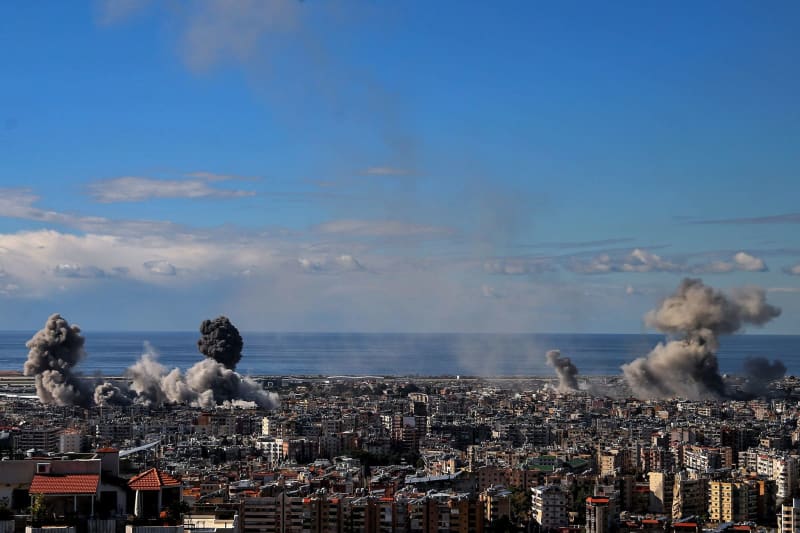On Tuesday, the Israeli air force conducted airstrikes in Beirut, targeting locations associated with the Hezbollah militia in anticipation of a potential ceasefire agreement between Israel and the group. These preemptive strikes were aimed at curbing Hezbollah’s military capabilities amid ongoing conflicts in the region. The attacks specifically focused on the Burj al-Barajneh neighborhood, a southern suburb of the Lebanese capital, where the Israeli military had previously issued evacuation orders to residents in anticipation of the assault. Witness accounts described the intensity of the bombings, with significant explosions reported throughout the area.
The airstrikes resulted in considerable destruction, with Lebanese security sources indicating that at least six buildings were obliterated by the attacks. This level of devastation highlights the ongoing tensions and the willingness of Israeli forces to execute significant military operations within urban areas to target militia threats. In addition to the damage inflicted on infrastructure, the strikes reportedly led to casualties among the militia ranks, as Israeli military assessments indicated that a commander of Hezbollah, a pro-Iranian Shiite group, was killed in the operation. This commander had been identified as a key figure involved in orchestrating attacks against Israeli targets, underscoring the strategic motivations behind the air force’s actions.
The timing of these attacks was particularly notable, occurring just hours before a scheduled meeting of the Israeli security Cabinet. During this meeting, key military and governmental decision-makers were expected to discuss the ongoing conflict with Hezbollah and evaluate options for halting hostilities. Reports suggested that a ceasefire lasting 60 days could be approved if the security officials reached a consensus. This potential truce highlights the complex interplay between military operations and diplomatic efforts in the region, reflecting both the urgency of the situation and the desire to stabilize relations.
The history of hostilities between Israel and Hezbollah is marked by a series of armed confrontations and retaliatory strikes, driven largely by territorial disputes and mutual animosities. The current situation aims not only to address immediate security threats but also to navigate the intricate dynamics of power and influence within Lebanon and the broader Middle East. The Israeli military actions signify a calculated approach to limiting Hezbollah’s operational capacity while also seeking to gain leverage in potential peace negotiations.
As the conflict continues to impact civilian life, the residents of Beirut and surrounding areas face the dire consequences of military actions. The airstrikes serve as a stark reminder of the fragile nature of peace in the region and the significant humanitarian toll that military confrontations impose. The destruction of buildings and the resultant displacement of residents amplify concerns regarding safety and stability, underscoring the need for a robust and lasting ceasefire to protect civilian populations.
Ultimately, the developments surrounding the Israeli airstrikes on Beirut reflect the complex interplay of military strategy, geopolitical maneuvers, and humanitarian concerns. As both sides weigh their options in light of the recent violence, the potential for a ceasefire presents an opportunity for dialogue and negotiations. However, the path to achieving lasting stability will require addressing underlying issues and fostering cooperation among diverse factions in the region, particularly as the implications of these military actions resonate throughout Lebanon and beyond.

